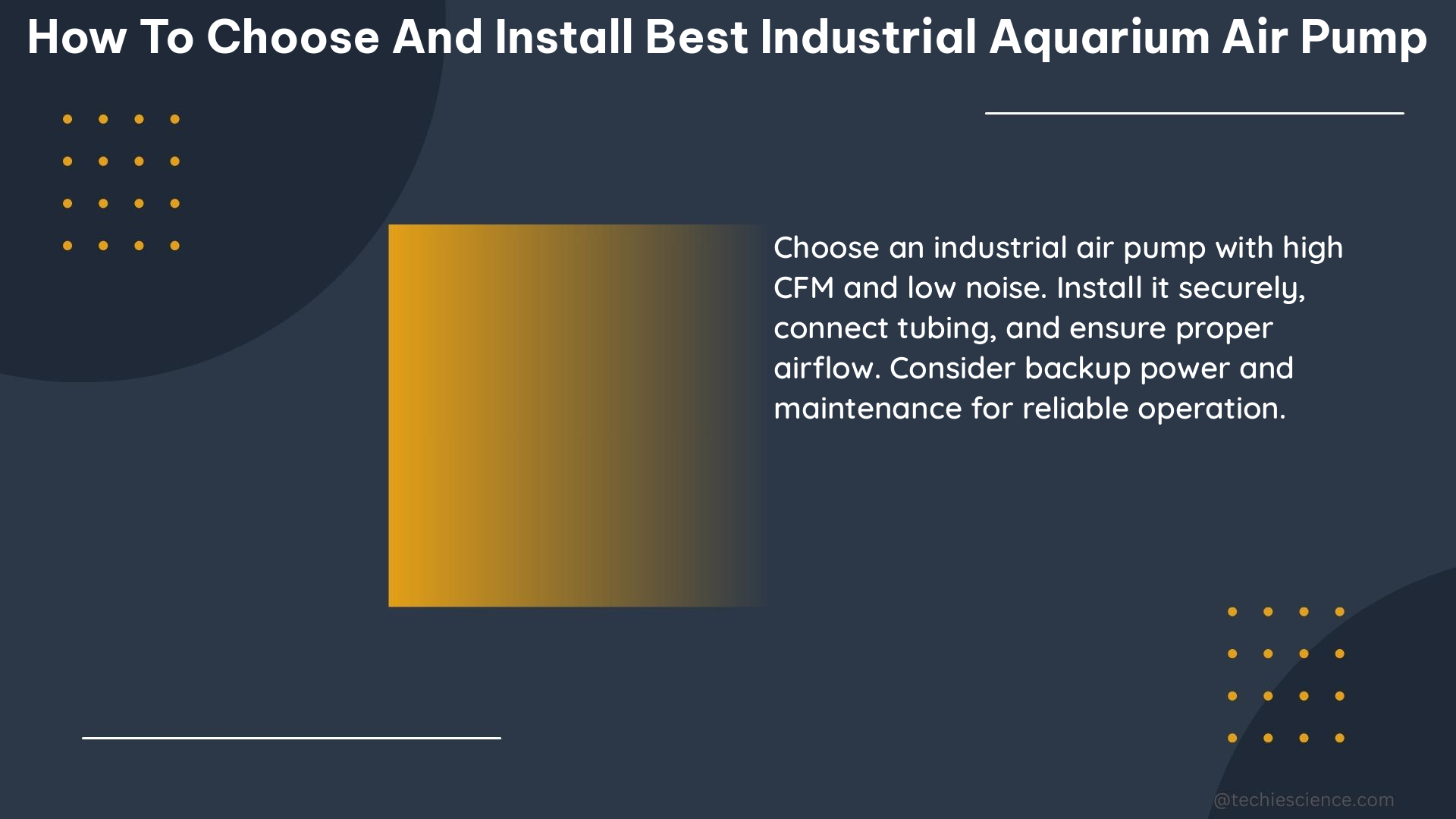When it comes to maintaining a healthy and thriving aquarium, the choice of an industrial-grade air pump is crucial. These powerful pumps play a vital role in providing the necessary aeration and circulation for your aquatic ecosystem. In this comprehensive guide, we’ll delve into the key factors to consider when selecting and installing the best industrial aquarium air pump.
Airflow Rate: The Lifeblood of Your Aquarium
The airflow rate, measured in liters per minute (LPM) or cubic inches per minute (cu.in/min), is the primary specification to look for when choosing an industrial air pump. This metric determines the volume of air the pump can move, which directly impacts the oxygenation and circulation within your aquarium.
For example, the Pondmaster AP-Series air pumps offer a wide range of airflow rates, from 1700 cu.in/min to an impressive 9150 cu.in/min, catering to the needs of various aquarium sizes and stocking levels.
Power Consumption: Balancing Efficiency and Performance

The power consumption of an industrial air pump, measured in watts, is another crucial factor to consider. Higher-powered pumps can provide greater airflow, but they also consume more electricity, impacting your energy bills and carbon footprint.
The Pondmaster AP-Series air pumps, for instance, have power ratings ranging from 20 watts to 120 watts, allowing you to select a model that strikes the right balance between performance and energy efficiency for your specific aquarium setup.
Outlet Versatility: Accommodating Your Aquarium’s Needs
The number of airline outlets on an industrial air pump determines how many air stones, diffusers, or other aeration devices you can connect to it. This is an essential consideration, as it affects the overall coverage and distribution of oxygen within your aquarium.
The Pondmaster AP-Series air pumps offer a range of outlet configurations, from 6 to 14 outlets, ensuring that you can tailor the airflow to your aquarium’s specific requirements.
Maximum Pressure: Powering Your Aquarium’s Aeration
The maximum pressure that an industrial air pump can generate, measured in pounds per square inch (PSI) or millimeters of water column (mm WC), is another important factor. This specification determines the pump’s ability to overcome the resistance of airline tubing, air stones, and the water column itself, ensuring adequate airflow delivery.
The Pondmaster AP-Series air pumps boast maximum pressure ratings ranging from 4.0 PSI to 8.5 PSI, catering to a wide variety of aquarium setups and aeration requirements.
Noise Considerations: Maintaining a Peaceful Environment
The noise level of an industrial air pump, measured in decibels (dB), can be a significant factor, especially if your aquarium is located in a living space or office. Quieter pumps can help create a more serene and enjoyable environment for both you and your aquatic inhabitants.
The Hiblow HP-80 diaphragm air pump, for example, operates at a relatively low noise level of 45 dB, making it a suitable choice for noise-sensitive setups.
Power Source: Matching Your Electrical Infrastructure
The power source required by an industrial air pump, whether AC or DC, is an important consideration, as it must align with the electrical infrastructure in your aquarium’s location. This ensures a safe and reliable power supply for your pump.
The Tetra Whisper air pump, for instance, utilizes a standard AC power cord, making it compatible with most household electrical outlets.
Installation Requirements: Ensuring a Secure and Efficient Setup
The installation requirements of an industrial air pump, including the space and mounting needs, as well as any additional components like airline, check valves, and air stones, should be carefully evaluated. This ensures a secure and efficient setup that maximizes the pump’s performance and longevity.
The Aquarium Co-Op piston air pump, for example, requires a mounting bracket and a dedicated power supply, which should be factored into your installation planning.
By considering these key factors – airflow rate, power consumption, outlet versatility, maximum pressure, noise level, power source, and installation requirements – you can make an informed decision and choose the best industrial aquarium air pump to meet the specific needs of your aquatic ecosystem. Remember to always follow the manufacturer’s instructions for proper installation and maintenance to ensure the long-term reliability and performance of your air pump.
Reference:
– Pondmaster AP-Series Air Pumps
– Hiblow HP-80 Diaphragm Air Pump
– Tetra Whisper Air Pump
– Aquarium Co-Op Piston Air Pump
